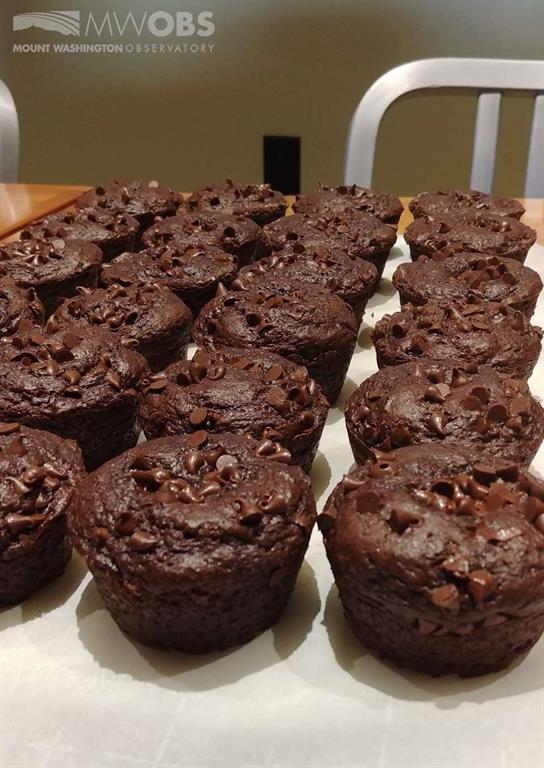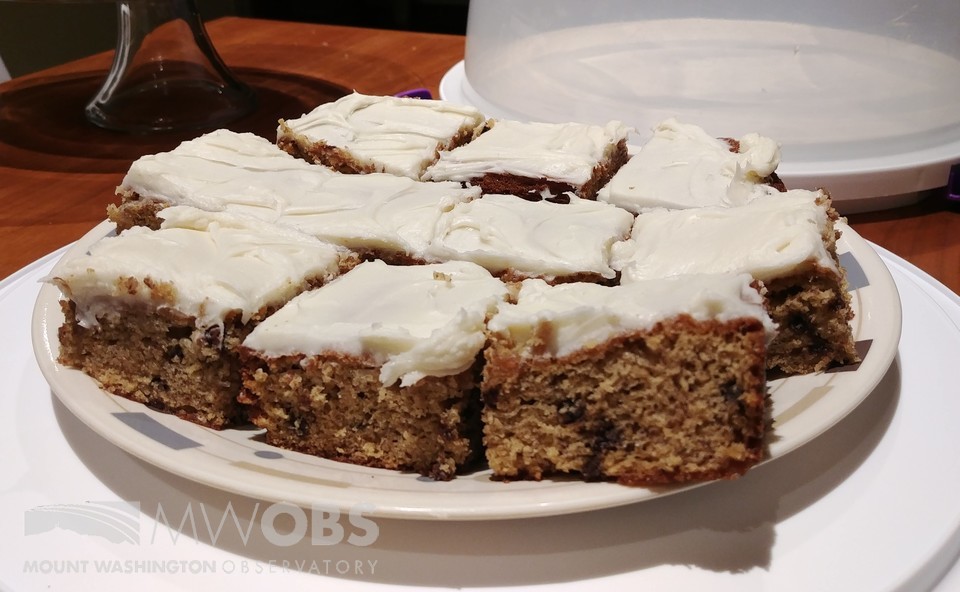Baking Up a Storm on the Summit
2020-04-27 14:06:36.000 – AJ Grimes, Weather Observer
During our week-long shifts on the summit, cooking duties are usually handled by a pair of volunteers that join us for the week and provide us with amazing home-cooked meals. However, there are times of the year without volunteers, and then it’s up to the observers and interns to get brave in the kitchen and do the cooking ourselves. Fortunately, all of us enjoy cooking, and the crew on each shift works together to make a complete meal each night. My personal contribution is often to make the desserts – even off the summit it’s one of my favorite things to do. However, it can be a little tricky on the summit getting recipes to turn out just right if you don’t plan for some adjustments. High altitude baking is anything over 3,000 feet above sea level, and at our lofty 6,288 feet, some of our baked treats could fall flat if we made them the same way as at sea level. So how is cooking affected, and how do we still bake delicious creations that stay fluffy in the clouds?

Double chocolate sour cream cupcakes.
There are two main changes that affect baking as altitude increases. First the air pressure is lower. As a result, dough rises more quickly – and it’s working against less pressure to puff up. Usually, as the dough is rising, it’s also cooking at the right rate to balance the rise so that it’s setting as it cooks, and that expansion is internally supposed. Second, along with lower pressure, it’s much drier up here, so recipes might dry out too quickly. What we don’t want is for dough (like cake or bread) to expand too quickly, make large or uneven air pockets, cook unevenly, dry out, or deflate. Depending on the recipe and its mixture of flour, leavening agent (baking soda, baking powder, or yeast – whatever’s making it rise), fat, and liquid, we may have to make some adjustments ensure a delicious recipe at sea level comes out right on the mountaintop.

Pecan pies baked for Thanksgiving – one with chocolate chips mixed in, one without.
First, we have to heat things up. If we increase the oven temperature by 15-20⁰F, it’ll help the baked goods set faster and cook before drying out. As a result, we also have to reduce baking time (to ballpark, about 5-8 minutes per 30 minutes of baking time). Sugar can be decreased by about 1 tablespoon per cup to keep the structure of the dough strong – less is needed with the evaporating liquid. We can also compensate by adding a few extra tablespoons of liquid (water, oil, eggs, or milk, depending on the recipe) and two tablespoons or so of flour to help strengthen the dough.

Banana chocolate chip cake with cream cheese frosting.
Finally, to tamp down the rise a bit, we could reduce the amount of baking powder, baking soda, or yeast since less is needed. Of course, these all require a bit of trial and error before getting a feel for which changes you should be making. This just means that there are more baking adventures to come on the summit of Mount Washington!
AJ Grimes, Weather Observer
Supporter Spotlight: Ryan Shepard
Supporter Spotlight: Ryan Shepard By Ryan Shepard and Carissa Milliman Ever since I was a kid, living in Western New York and growing up with lake effect snow, I thought harsh weather was incredibly
Supporter Spotlight: Erik Rider
Supporter Spotlight: Erik Rider By Wendy Almeida For Erik Rider, supporting Mount Washington Observatory comes from a lifelong fascination with weather and how it shapes daily life. Growing up along the Massachusetts coast, he
An Autumn Above the Clouds on Mount Washington
An Autumn Above the Clouds on Mount Washington By Cassie Farnsworth I don’t know how many times in life you get to say “it was exactly what I hoped it would be,” but my


